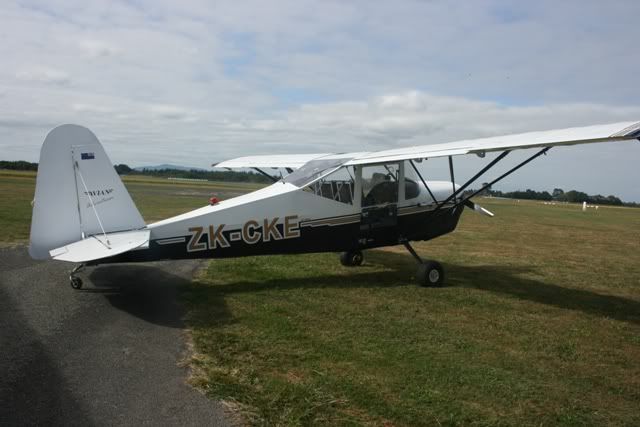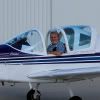Post by flyjoe180 on Dec 8, 2007 14:34:09 GMT 12
Auster Reaches a Higher Plane in New Zealand History
7/12/07
The world’s first ski plane with retractable skis has found a new hangout at the Sir Edmund Hillary Alpine Centre at The Hermitage, Aoraki Mount Cook.
The Auster ZK BDX, a four-seater fixed-wing light aircraft which, until recently was suspended from the ceiling of Queenstown Airport, will be on display at the Sir Edmund Hillary Alpine Centre Museum from late December.
The Auster made aviation history on 22 September 1955 when Sir Henry Wigley (better known as Harry) made the first snow landing on the Tasman Glacier, the longest glacier in the Southern Hemisphere.
Denis Callesen, General Manager of The Hermitage, is fascinated by the Auster and says he’s looking forward to visitors seeing it.
“There’s so much history tied to the Auster – the innovation it took to come up with the ski lowering mechanism is amazing.
“Many people will have already seen it at Queenstown airport but now they will be able to learn more about the intriguing story behind it.”
The $7.5 million Sir Edmund Hillary Alpine Centre, will bring together a state-of-the-art 3D theatre, New Zealand’s first full dome digital definiti® Planetarium and a comprehensive museum featuring some 5,000 exhibits of climbing, tourism and human endeavour in the region which have been collected by The Hermitage and the Museum Trust.
About Sir Harry Wigley and The Auster
An innovator and entrepreneur, Wigley had studied the feasibility of equipping light aircraft with retractable skis to enable take off from a traditional runway and then land on snow. Overseas, aircraft had been equipped with skis for snow take-offs and landings, but the use of both wheels and skis was unknown.
Perseverance and a good dose of Kiwi ingenuity paid off for Harry. A hinged axle lowered and raised the Oregon skis, which were laminated onto kitchen formica. This system was activated by a handbrake-style lever which the pilot reached by leaning out the window! An oval cut into the skis allowed the wheels to protrude for landing on hard surfaces. The Auster was fitted-out in the Mt Cook Company's (Harry’s motor vehicle business) Timaru workshop.
Wigley flew from the grass airfield at Mt Cook and touched down on the Tasman Glacier with one passenger, an employee, Alan McWhirter. Sir Edmund Hillary, the legendary New Zealand mountaineer, was also among the first passengers to land on the glacier that historic day.
Wigley’s success marked the beginning of commercial flights on to the Tasman Glacier and the establishment of a regional airline, Mount Cook Airlines.
Less than a year after the retractable ski prototype was successfully tested, the Mount Cook Company ski plane business was up and running, and quickly became a household name.
The Auster served the company well but was soon replaced by the Cessna 180s — an early model of the 185s Mount Cook Ski Planes still in use today.
About The Sir Edmund Hillary Alpine Centre
The Sir Edmund Hillary Alpine Centre is designed to be the place to go and feel at one with New Zealand’s most famous New Zealander. It also encompasses and records the stories of early pioneers reaching the area, summiting one of the world’s most difficult peaks and establishing what is today a flourishing climbing and tourism culture.
At the Sir Edmund Hillary Alpine Centre, New Zealanders will feel a sense of cultural belonging and international people will experience the culture and man that Sir Edmund represents.
The Hermitage at Aoraki Mount Cook is an integral part of New Zealand’s tourism history. It lies within a World Heritage Wilderness Area and is surrounded by the silent splendour of the Southern Alps and looks out to the majestic Aoraki Mount Cook.
Surrounded by glaciers, rocks, rivers, lakes and valleys, Aoraki Mount Cook is an iconic, must visit destination for New Zealanders and international visitors. In 2006 it was voted number 6 on the 101 Must-Do’s for Kiwi’s in the nationwide AA Travel domestic travel survey.
www.fourcorners.co.nz/new-zealand/tourism-news-detail/index.cfm/articleId/17646/
7/12/07
The world’s first ski plane with retractable skis has found a new hangout at the Sir Edmund Hillary Alpine Centre at The Hermitage, Aoraki Mount Cook.
The Auster ZK BDX, a four-seater fixed-wing light aircraft which, until recently was suspended from the ceiling of Queenstown Airport, will be on display at the Sir Edmund Hillary Alpine Centre Museum from late December.
The Auster made aviation history on 22 September 1955 when Sir Henry Wigley (better known as Harry) made the first snow landing on the Tasman Glacier, the longest glacier in the Southern Hemisphere.
Denis Callesen, General Manager of The Hermitage, is fascinated by the Auster and says he’s looking forward to visitors seeing it.
“There’s so much history tied to the Auster – the innovation it took to come up with the ski lowering mechanism is amazing.
“Many people will have already seen it at Queenstown airport but now they will be able to learn more about the intriguing story behind it.”
The $7.5 million Sir Edmund Hillary Alpine Centre, will bring together a state-of-the-art 3D theatre, New Zealand’s first full dome digital definiti® Planetarium and a comprehensive museum featuring some 5,000 exhibits of climbing, tourism and human endeavour in the region which have been collected by The Hermitage and the Museum Trust.
About Sir Harry Wigley and The Auster
An innovator and entrepreneur, Wigley had studied the feasibility of equipping light aircraft with retractable skis to enable take off from a traditional runway and then land on snow. Overseas, aircraft had been equipped with skis for snow take-offs and landings, but the use of both wheels and skis was unknown.
Perseverance and a good dose of Kiwi ingenuity paid off for Harry. A hinged axle lowered and raised the Oregon skis, which were laminated onto kitchen formica. This system was activated by a handbrake-style lever which the pilot reached by leaning out the window! An oval cut into the skis allowed the wheels to protrude for landing on hard surfaces. The Auster was fitted-out in the Mt Cook Company's (Harry’s motor vehicle business) Timaru workshop.
Wigley flew from the grass airfield at Mt Cook and touched down on the Tasman Glacier with one passenger, an employee, Alan McWhirter. Sir Edmund Hillary, the legendary New Zealand mountaineer, was also among the first passengers to land on the glacier that historic day.
Wigley’s success marked the beginning of commercial flights on to the Tasman Glacier and the establishment of a regional airline, Mount Cook Airlines.
Less than a year after the retractable ski prototype was successfully tested, the Mount Cook Company ski plane business was up and running, and quickly became a household name.
The Auster served the company well but was soon replaced by the Cessna 180s — an early model of the 185s Mount Cook Ski Planes still in use today.
About The Sir Edmund Hillary Alpine Centre
The Sir Edmund Hillary Alpine Centre is designed to be the place to go and feel at one with New Zealand’s most famous New Zealander. It also encompasses and records the stories of early pioneers reaching the area, summiting one of the world’s most difficult peaks and establishing what is today a flourishing climbing and tourism culture.
At the Sir Edmund Hillary Alpine Centre, New Zealanders will feel a sense of cultural belonging and international people will experience the culture and man that Sir Edmund represents.
The Hermitage at Aoraki Mount Cook is an integral part of New Zealand’s tourism history. It lies within a World Heritage Wilderness Area and is surrounded by the silent splendour of the Southern Alps and looks out to the majestic Aoraki Mount Cook.
Surrounded by glaciers, rocks, rivers, lakes and valleys, Aoraki Mount Cook is an iconic, must visit destination for New Zealanders and international visitors. In 2006 it was voted number 6 on the 101 Must-Do’s for Kiwi’s in the nationwide AA Travel domestic travel survey.
www.fourcorners.co.nz/new-zealand/tourism-news-detail/index.cfm/articleId/17646/






